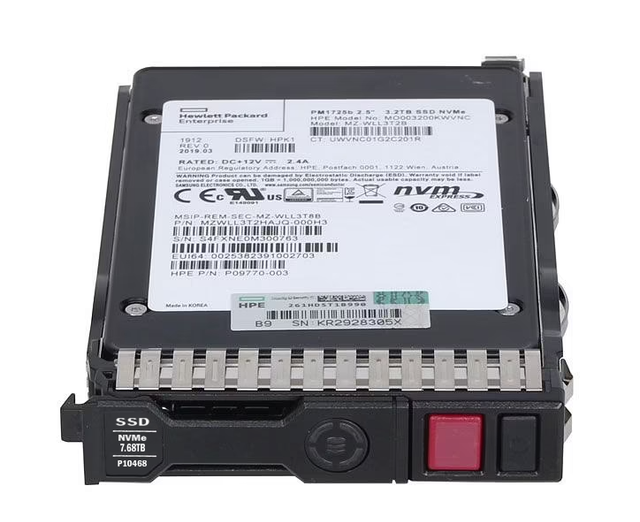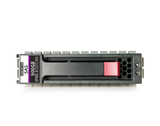Enhancing Data Center Efficiency: A Deep Dive into HPE NVMe PCIe x4 SCN Read Intensive SSDs for Gen9 and Gen10 Servers
As modern data centers evolve to meet increasing demands for high performance, reliability, and storage efficiency, enterprises are continually looking for storage solutions that can keep pace with the rapid growth of data. HPE (Hewlett Packard Enterprise) offers a range of storage solutions tailored to meet these requirements. One such offering is the HPE NVMe PCIe x4 SCN Read Intensive SSD, designed specifically for Gen9 and Gen10 servers.
In this article, we will explore the key features, benefits, and use cases of the HPE NVMe PCIe x4 SCN Read Intensive SSD, and how it caters to the storage demands of read-intensive applications.
1.Overview of NVMe Technology
NVMe (Non-Volatile Memory Express) has emerged as a standard interface designed to harness the high-performance potential of SSDs. It delivers significant improvements over traditional storage interfaces, such as SATA and SAS, by reducing latency and optimizing data transfer speeds. PCIe (Peripheral Component Interconnect Express) is a high-speed interface commonly used for connecting high-performance components to the server's motherboard, and when combined with NVMe, it enables blistering fast access to data.
The HPE NVMe PCIe x4 SCN SSD takes full advantage of this combination, utilizing the PCIe 3.0 x4 interface to provide direct communication between the SSD and the server's CPU, reducing bottlenecks and boosting overall system performance.
2.HPE NVMe PCIe x4 SCN Read Intensive SSD: Key Features
The HPE NVMe PCIe x4 SCN Read Intensive SSD is designed specifically for environments with high read operations and lower write operations. Some of the key features include:
a. High Performance
The SSD is optimized for read-intensive workloads, offering ultra-low latency and high throughput. With the PCIe x4 interface, it supports data transfer rates significantly faster than traditional SSDs. This makes it ideal for applications such as content delivery, web hosting, databases with high read/write ratios, and virtual desktop infrastructure (VDI).
b. Read Intensive Design
As a "read-intensive" SSD, it is built to handle a high volume of read operations with minimal wear and tear over time. This makes it well-suited for workloads like data analytics, web servers, and media streaming, where read operations far outweigh write demands.
c. Storage Capacity
HPE offers these SSDs in various capacities, allowing for flexibility depending on the size of the workload. Common capacities range from 960 GB to 7.68 TB, making them ideal for handling large datasets in environments where storage density is important.
d. High Endurance
Although classified as a "read-intensive" drive, it still provides a decent level of endurance, supporting a moderate number of writes over its lifetime. The endurance rating, typically measured in Drive Writes Per Day (DWPD), ensures that the SSD can handle a mix of read and write operations without experiencing premature failure.
e. Advanced Security and Reliability
HPE NVMe PCIe SSDs include built-in security features such as AES-256 encryption, ensuring that data is secure at rest. The SSDs also incorporate HPE’s Power Loss Protection technology, safeguarding data during unexpected power outages, thus providing enhanced reliability.
f. Firmware Management
HPE ensures that their SSDs are compatible with the HPE Server Management Software, allowing for seamless firmware updates, health monitoring, and diagnostics. This integration enhances the manageability and serviceability of the drives within HPE Gen9 and Gen10 server environments.
3. Compatibility with Gen9 and Gen10 Servers
The HPE NVMe PCIe x4 SCN Read Intensive SSD is compatible with both HPE Gen9 and Gen10 servers. This backward compatibility ensures that enterprises with legacy infrastructure can still benefit from high-performance NVMe storage without needing to overhaul their entire hardware ecosystem.
- Gen9 Servers:
These SSDs are ideal for upgrading older Gen9 systems, providing a significant boost in I/O performance for read-heavy applications. This is a cost-effective solution for companies looking to improve their storage infrastructure without investing in new servers.
- Gen10 Servers:
When paired with Gen10 servers, the HPE NVMe PCIe SSDs leverage the full potential of the latest advancements in server hardware, ensuring low latency, high throughput, and improved system efficiency. Gen10 systems also support more robust storage and network options, making them ideal for data-intensive workloads.
4. Use Cases for HPE NVMe PCIe x4 SCN Read Intensive SSD
The HPE NVMe PCIe x4 SCN Read Intensive SSD is designed for environments where fast data access is paramount, but where write operations are less frequent. Typical use cases include:
- Content Delivery Networks (CDN):
CDNs require fast access to large datasets to deliver content like videos, images, and webpages to users across the globe. These SSDs ensure fast retrieval and distribution of data.
- Web Hosting and Database Servers:
Web servers and database environments, especially those with more reads than writes, can significantly benefit from the high-speed performance of NVMe SSDs, ensuring quick query response times and fast web page load times.
- Media Streaming:
Media platforms can leverage the SSD's high throughput to stream large amounts of data efficiently, delivering smooth and seamless playback to end-users.
- Virtual Desktop Infrastructure (VDI):
VDI environments demand fast access to data, especially when multiple users are running read-heavy workloads. These SSDs ensure the infrastructure is capable of handling the read demand of hundreds or thousands of virtual desktops simultaneously.
5. Conclusion
The HPE NVMe PCIe x4 SCN Read Intensive SSD for Gen9 and Gen10 servers is a versatile and high-performing solution for enterprises looking to optimize their storage for read-heavy workloads. By combining NVMe technology with PCIe’s high bandwidth, these SSDs offer fast data access, improved system efficiency, and a reliable storage solution for a wide range of applications.
Whether you're looking to upgrade existing Gen9 servers or implement high-performance storage for Gen10 systems, the HPE NVMe PCIe x4 SCN Read Intensive SSD provides the ideal balance of performance, endurance, and security for today's data-driven environments.
Recent Posts
-
The HPE 900GB Enterprise Hard Drive Optimized SAN Storage for Modular Smart Array 1040
In the rapidly advancing world of enterprise data storage, finding the right combination of performa …Jan 20th 2025 -
Powering Enterprise Storage: HPE’s 8TB SAS Hard Drive for ProLiant Servers
In today’s data-driven landscape, businesses require high-capacity, secure, and reliable storage sol …Jan 20th 2025 -
Powering the Future: HPE 1.2TB 10K RPM SAS-12Gbps Smart Drive – Precision Engineered for ProLiant Gen9 & Gen10
The HPE 1.2TB 10000RPM 2.5-inch SFF Digitally Signed Firmware SAS-12Gbps Smart Carrier Enterprise Ha …Jan 19th 2025




